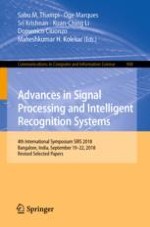2019 | Buch
Advances in Signal Processing and Intelligent Recognition Systems
4th International Symposium SIRS 2018, Bangalore, India, September 19–22, 2018, Revised Selected Papers
herausgegeben von: Sabu M. Thampi, Oge Marques, Prof. Sri Krishnan, Prof. Kuan-Ching Li, Domenico Ciuonzo, Dr. Maheshkumar H. Kolekar
Verlag: Springer Singapore
Buchreihe : Communications in Computer and Information Science
